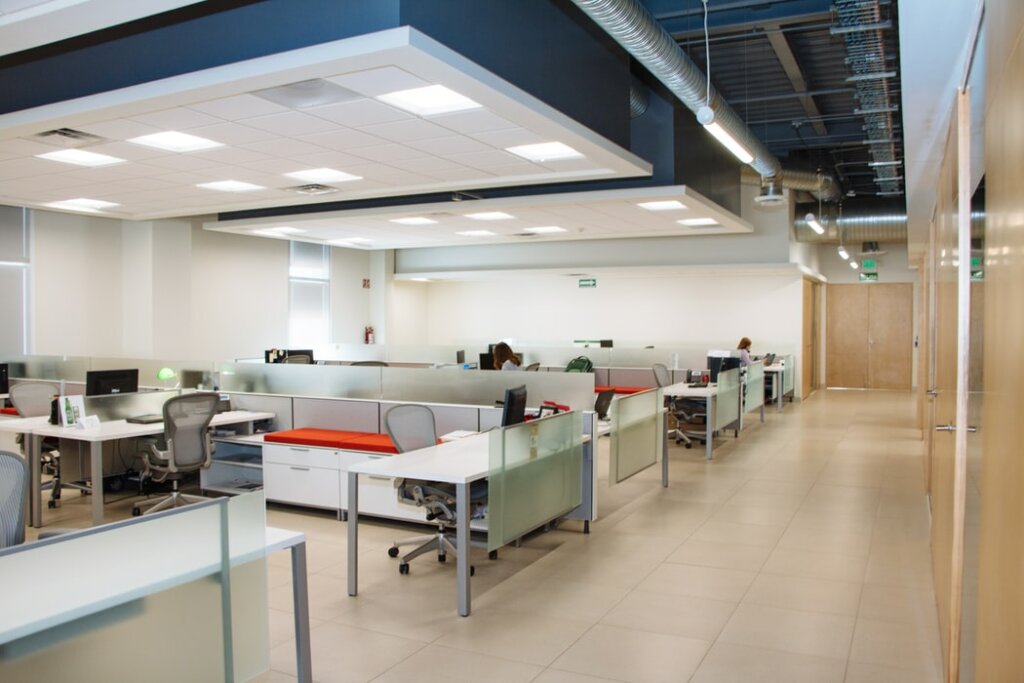Overview
Covid-19 has transformed office life, and the impacts are here to stay.
Even before the pandemic, the future of work and what that means for office space was a growing topic of conversation. In a 2019 survey by FlexJobs, 80 percent of respondents indicated that they would be more loyal to employers who offered flexible work options – trending upward from the 75 percent in the 2018 survey who said the same.
The pandemic demonstrated that productivity levels can be maintained, and in some cases enhanced, whether the work is done at home or in the office. Offering workers flexibility is more important than ever for companies focused on talent acquisition and retention.
As offices begin to welcome back employees, companies are transitioning away from dedicated desks and into more flexible work environments. Facility managers are being called upon to reduce the total cost of occupancy by improving space utilization.
Below, we explore the importance of office space management best practices and discuss the most optimal strategies for facility managers to consider.
Why is Space Management So Important for Offices?
1. Reduces Costs
According to a report from CBRE, there is over $150 billion in unused office space globally. Poor office space management leads to underutilized workspaces and unnecessary business expenses that can quickly add up.
Personnel and accommodation costs are often the largest line items on an organization’s expense sheet. Developing a strong office space management strategy can result in better decision-making that reduces both cost centers. Organizations can re-allocate spaces that aren’t being used for a more appropriate purpose or even make a case for, or against, the need for an expansion based upon real-time data.
2. Improves Energy Consumption
Today, corporations are under pressure to reduce their carbon footprint. With an average of 30 percent of energy going to waste in commercial buildings, it’s incredibly important to optimize workspaces to manage energy consumption and create efficiencies. This can mean adjusting lighting and HVAC systems to coincide with times when the building is occupied, and eliminating underused spaces that are wasting energy.
Not only does this help organizations reach their sustainability goals, but it can also significantly reduce operational costs. Buildings that reduced their energy consumption by 25% had 19% lower operational costs, according to the U.S. General Services Administration (GSA). Better environmental controls also make buildings more comfortable to work in. GSA’s study found green buildings result in 27% higher occupant satisfaction rates than the national average.
3. Promotes Productivity
A study by Hassell and Empirica Research found that 37% of job candidates will accept a job with a lower salary if the company offers appealing culture, workplace facilities, and technology.
Maintaining workplace productivity and competitiveness in the talent market are critical business objectives that serve the bottom line. Effective space management can help.
Being able to observe how (and when) employees interact with the space around them enables facility managers to pass on key insights that result in a stronger corporate culture and greater productivity.
Strategies for Better Space Management
1. Develop Clear Organization Goals
An important first step to any space management strategy is developing an outline of organization goals for both the short and long-term. These goals should take into account current demands, future space needs, and the current utilization of office space.
2. Consider Automating Office Processes
Finding ways to automate time and resource-intensive processes is an important feature of an effective office space management strategy. For example, automated processes can include:
- Data collection for better decision-making.
- Automated support ticketing for expedited office facility repairs.
- And as mentioned previously, automated lights and HVAC systems for reduced energy costs.
The opportunities for automation are growing every day. Thanks to these latest technology advancements, facilities can better support businesses and workers alike.
3. Utilize Data
Arming decision-making with as much data and information as possible is critical to the success of any office’s space management strategy. Tools such as AI occupancy management allow for the collection of real-time data regarding people flow, crowds, and loitering. Forward-looking organizations are getting on board: the occupancy analytics market for commercial office spaces is expected to rise to over $4 billion by 2022.
Enhance Your Office Space Management Strategy
For facility managers looking to reduce office space management costs, improve energy efficiency and foster a happier, more productive workforce, Actuate’s AI occupancy management software can help.
Our advanced AI tracks the flow of people throughout facilities and outputs key analytics that enhances the effectiveness of office space management strategies. Actuate works directly with existing video security systems and does not collect personally identifiable information.
Learn more about AI Occupancy Management Software from Actuate






